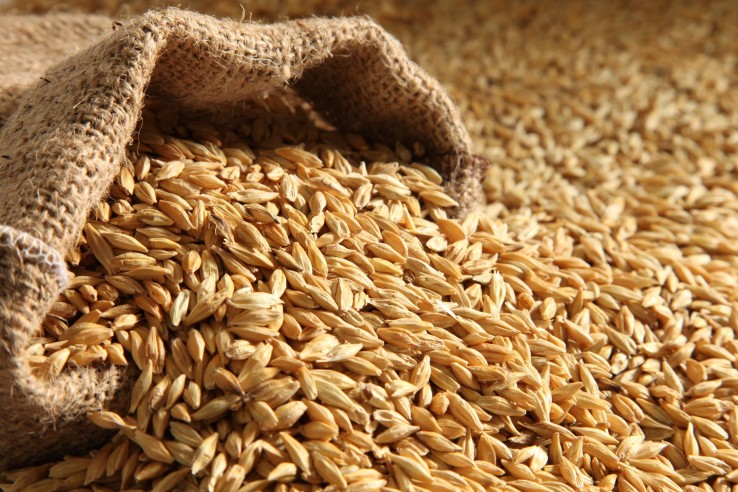Discovering Shochu: Episode 5 – Barley Shochu
Last month, the focus was on Imo Shochu – its history, characteristics, food pairings and serving suggestions. This month, DISCOVERING SHOCHU will feature all about Mugi Shochu.
It is said that the roots of Mugi Shochu dates back to the Edo period, from Iki Island located between Kyushu and the Korean Peninsula. The island was known for their abundant rice crop, however, their rice harvest was always earmarked for government taxes leaving none for use by the local farmers themselves. Instead, they consumed Mugi as the main staple, and whatever was left was used to brew Mugi Shochu. It remained a local brew for local consumption until four Centuries later, in 1979, Sanwa Shurui of Oita Prefecture launched their 100% Mugi Shochu. Their widely popular iichiko barley Shochu campaign transformed the entire category and sparked off an overnight Shochu boom throughout Japan.

There are several types of Mugi: barley, wheat and rye. Barley is what’s used for brewing Shochu. This is classified further depending on the shape of its ear – Nijyo Oomugi (two-rowed barley), Yonjyo Oomugi (four-rowed barley) and Rokujyo Oomugi (six-rowed barley). Japan, grows only Nijyo Oomugi and Rokujyu Oomugi.
Both Nijyo Oomugi and Rokujyo Oomugi both have two varieties: Hadaka Mugi (easy to hull variety) and Kawa Mugi (hard to hull variety). Most Shochu brew use Kawa Mugi. Nijyo Oomugi has large, uniform grains with high starch content which is why it’s suited for brewing Shochu and was once imported from Europe during the Meiji Era as ingredient to brew another popular liquor, beer. Rokujyo Oomugi is typically used for mugi-cha (barley tea) and to consume as food.
CHARACTERISTICS AND TYPES OF MUGI
The ideal Mugi ingredient for Shochu brewing must meet several requirements. (1) must have large grains, (2) must contain large amount of starch, (3) be soft, (4) hard to hull, and (5) the grain must have a thin skin or shell.
There are two varieties that fit all of the requirements:
NISHI NO CHIKARA – a typical Mugi variety cultivated in all areas of Kyushu.
NISHI NO HOSHI – an improved variety of Nishi no Chikara. It has high starch content and has excellent saccharification and fermentation ability.

TYPES OF KOJI USED
Koji use varies from one brewery to another to arrive at their signature flavour. Mugi Shochu made with rice koji are most common, characterized by flavour depth and sweetness. On the other hand, Mugi Shochu made entirely of barley, including barley koji, has more pronounced aroma and flavor of barley.
FLAVOR STYLES & RECOMMENDATIONS
1. Light & Refreshing: The most popular style of Mugi Shochu. Can be enjoyed in various ways: straight, on the rocks, mixed with water, hot water or with fresh fruits.
2. Rich with Fragrant Aroma: Has robust aroma of roasted barley, coffee beans and bitter chocolate. Best enjoyed on the rocks as an after dinner drink. Pairs well with grilled dishes.
3. Full-Bodied: Iki Shochu typically has this flavor profile. The standard way of enjoying this type is oyuwari or mixing with a bit of hot water. Excellent when paired with deep fried or rich flavored dishes.
4. Barrel Aged: Characterized by its amber hue and complex aroma of baked confectionery, vanilla and spice. Best enjoyed on the rocks as after dinner drink. Compliments chocolate, custard cream and fruitcakes.

MUGI SHOCHU: FOOD PARING PICKS
1. Compliments well with grilled, fried and simmered dishes.
2. Pairs well not only with Japanese cuisine, but with western dishes.
3. Excellent accompaniment with tempura.
4. Suits dishes seasoned with soy sauce and/or Ponzu.
5. Excellent with dark meat chicken and blue-skin fish.

——-
SHOCHU TRIVIA
-Want to drink but worried about calories and sugar? Shochu is a low calorie drink, about 35 calories per 2 oz.
– Shochu is mild and easy on the body. It’s easily assimilated into the body and burns “clean”, with little residual hangover effect.
– One of the most popular ways of serving Shochu is Ume-wari, served with an Umeboshi pickled Japanese plum. It’s not only delicious, but inhibits fatigue from over drinking. The citric acid helps protect the lining of the stomach against disease, thus there are many Shochu drinks blended with citric acid flavorings. Try serving shochu with Umeboshi, Kabosu (Japanese citrus), Sudachi (Japanese citrus), lemon, etc.


